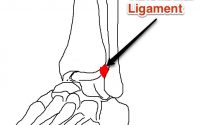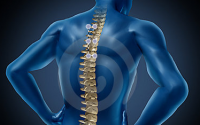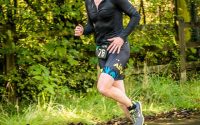Damage Vs Pain/Sensitivity
I guess if you are reading this you are like me and love learning. My learning slowed a bit for a while, but having started my M.Sc. the rate has picked up considerably! I enjoy reading about pain and biomechanics, I also love a good podcast. Listening to one recently by Dr Seth O’Neill; absolutely fascinating!! (here’s a link if you are interested)
I absolutely, love biomechanics and my bias through my personal training and physio career has always been more on the movement side, like the last few blogs on Understanding Dysfunction. When I was introduced to pain science it was a real eye opener. Though it was something I was aware of it was Andrew Nicholettos and his passion for pain science that really helped me make the connections.
The one thing that the Seth O’Neill podcast talked about was the balance between the physical side of treatment and the brain side. I think this is one thing we all struggle with at times. Sometimes you end up feeling that you have gone too movement, biomechanics and loading side of things. Other times you spend a lot of time on pain education. Sometimes, for whatever reason you end up feeling you might have gone too far down that route.
The Pain/Biomechanics Balance
There is always a balance to be found and it is individual to all patients. It’s an equation you are trying to solve for the patient standing in front of you. Some patients need more of one than the other, but in my experience there’s a mix a both.
When I left Ospreys Rugby team at the end of the 2015 season I spent a fair bit of time on the pain side of things. It’s interesting, because not long after that I got a temporary job working in chronic pain and the learning came in very handy! Great way to confirm and integrate what I’d learnt. It was interesting, because there was no hands on treatment. It was triage, exercise and education. Great way to learn some new skills.
The Pain Side
I think when it comes to the pain side of the equation you get great results from:
- Looking at the language you use
- Helping the patient understand their injury
- Helping the patient understand pain
- The difference between pain and damage
- Starting them on a successful path
Interestingly, when you are doing an initial assessment you don’t know how much to go into. Sometimes I get carried away and try and teach them everything about pain in one go! Usually a mistake as it can be a bit overwhelming. Best to start with a few key basics and open them up to the idea that just because you have pain does not mean you are causing damage.
When you take on a patient that has been solely down the biomechanics/loading route. It can be a gradual process to help them understand as their mindset might be a tissue damage oriented. However, if you can strike the right balance you can get great results with these patients. I stumbled across an interesting phrase…it kind of rolled out when discussing pain with a patient like this:
‘Are you looking for a mechanical solution to a sensitivity problem?’
This also shows that I tend to use the word sensitivity rather than pain. It just seems to work better.
The Biomechanics/Loading Side
The other side of the equation is tissue damage, biomechanics and loading side. In my experience this is where you spend most of your time learning at Uni and in the early part of your career. I think this is because there is a more tangible aspect to this. You’ve got a lot of anatomy to learn, a lot of pathophysiology and trying to understand movement. It’s pretty damn important to learn all this!!
If you are like me, I do remember talk on psychosocial issues and pain, but it’s all so overwhelming!! I was so keen to understand the biomechanics and movement as I felt that was the key to getting people better. It is one of the key parts as you can’t just rely on understanding pain. An example used in the podcast was that of a tendinopathy that had’t been loaded. No matter how good you are with pain, a runner isn’t going to regain the loading capacity in their tendon without some loading.
Understanding tissue damage, loading and movement is clearly a massive part of physio. Which I’m so glad of as I still love all that stuff!! It’s just key to feed in some balance thoughts about pain.
Summary
I’ve tried to show both sides of the equation as best I can. Hopefully it is clear that the best results will come from a balance of the two sides. The proportions of one or the other will vary with each patient. I don’t get it right every time, but hopefully with experience I’m right more than I am wrong.
One other thing to say is that as with all therapeutic relationships, it is an evolving process. It will change over time and though you may have needed a more pain side approach initially, you may move more loading/biomechanics…or vice versa. It’s always a learning process and really they are both part of the same process and the more I learn the closer they are to each other.
Physioblogger


